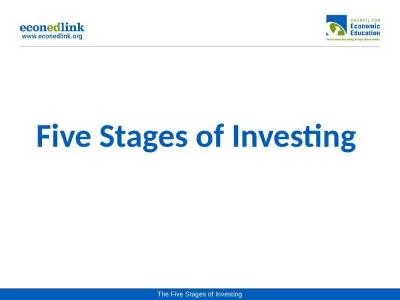Chapter 12 Physiology of Investing Psychobiology
Author : marina-yarberry | Published Date : 2025-06-23
Description: Chapter 12 Physiology of Investing Psychobiology The branch of psychology that studies the biological foundations of behavior emotions and mental processes The American Heritage Medical Dictionary 2 Gender Women are more risk averse than
Presentation Embed Code
Download Presentation
Download
Presentation The PPT/PDF document
"Chapter 12 Physiology of Investing Psychobiology" is the property of its rightful owner.
Permission is granted to download and print the materials on this website for personal, non-commercial use only,
and to display it on your personal computer provided you do not modify the materials and that you retain all
copyright notices contained in the materials. By downloading content from our website, you accept the terms of
this agreement.
Transcript:Chapter 12 Physiology of Investing Psychobiology:
Chapter 12 Physiology of Investing Psychobiology The branch of psychology that studies the biological foundations of behavior, emotions, and mental processes. The American Heritage Medical Dictionary 2 Gender Women are more risk averse than men Women are also under-represented in the finance industry For federal government workers in the Thrift Savings Plan, women invest their pension assets more conservatively Married women invest a smaller proportion of their portfolio in stocks than married men Women are more risk averse than men in lab settings and in investment decisions in their lives Being more financially risk averse means that women take less risk in their investment portfolios Note that taking less financial risk will result in lower returns and a smaller portfolio value Thus, a gender risk gap will lead to a gender wealth gap over time 3 Are gender differences due to culture, early life experiences, or some innate differences in characteristics like risk attitudes? A lottery type experiment was conducted with students from coed schools and same-sex schools The level of risk aversion was found to be: girls at coed schools (highest) girls at same-sex schools boys at coed schools boys at same-sex schools (lowest) Less social interaction with boys results in girls taking more financial risk Some of the risk aversion gender differences may be gender-stereotype learned behavior Some may be biology 4 Nature versus Nurture Our decision-making is influenced by our experiences, education, cognitive process, and social environment But is also driven by our physiology? What can we learn from twins, hormones, neuroeconomics, etc.? 5 6 Twins Identical Twins (monozygotic twins) One fertilized egg splits into two Share 100% of their genetic composition Fraternal Twins (dizygotic twins) Two eggs each fertilized separately Share 50% of their genetic composition, on average Swedish Twin Registry 37,504 twins 10,842 identical 26,662 fraternal Opposite gender: 14,252 Same gender: 12,410 Swedish Tax Agency Until 2006, required to report assets (1.5% wealth tax) Investment data 7 Twin Investment Study Objective: Compare the investments of identical twins, fraternal twins (same and different genders), random matches 1. Participation in the stock market 2. Proportion of portfolio in the stock market 3. Level of portfolio risk Proportion Explained by Genetics 8 Amir Barnea, Henrik Cronqvist, and Stephan Siegel, “Nature or Nurture: What Determines Investor Behavior?” Journal of Financial Economics 98(2010): 583–604. Study Conclusions Regression analysis can control for the level of wealth, education, age, etc. Portion of














